
The Dollar Wrecking Ball: Why is a strong US dollar so dangerous?
The rising US dollar strength is starting to produce cracks across economies and markets.
Solana was developed in 2017 by Anatoly Yakovenko, a former engineer and executive at Qualcomm, a goliath in the telecommunication and semiconductor sector. Named after a beach in California, Solana aims to solve the blockchain trilemma, a concept proposed by the Ethereum founder, Vitalik Buterin. The trilemma assumes that out of three essential blockchain features, namely security, decentralization and scalability, each project has to sacrifice one in favour of the two others. Using a unique consensus mechanism called Proof-of-history, Anatoly claims he solved the trilemma and married all three features into the Solana blockchain. The project has certainly been a huge success, with Solana breaking into the top 10 cryptocurrencies by market cap and seeing fierce network adoption. Despite the wider praise, critics argue that Solana was not actually able to solve the trilemma. No one doubts the project’s ability to scale; after all, it is still the fastest blockchain in the industry. However, to some, the level of security and decentralization remains unsatisfactory. So, let’s delve deeper into the project dubbed the “Ethereum killer”.
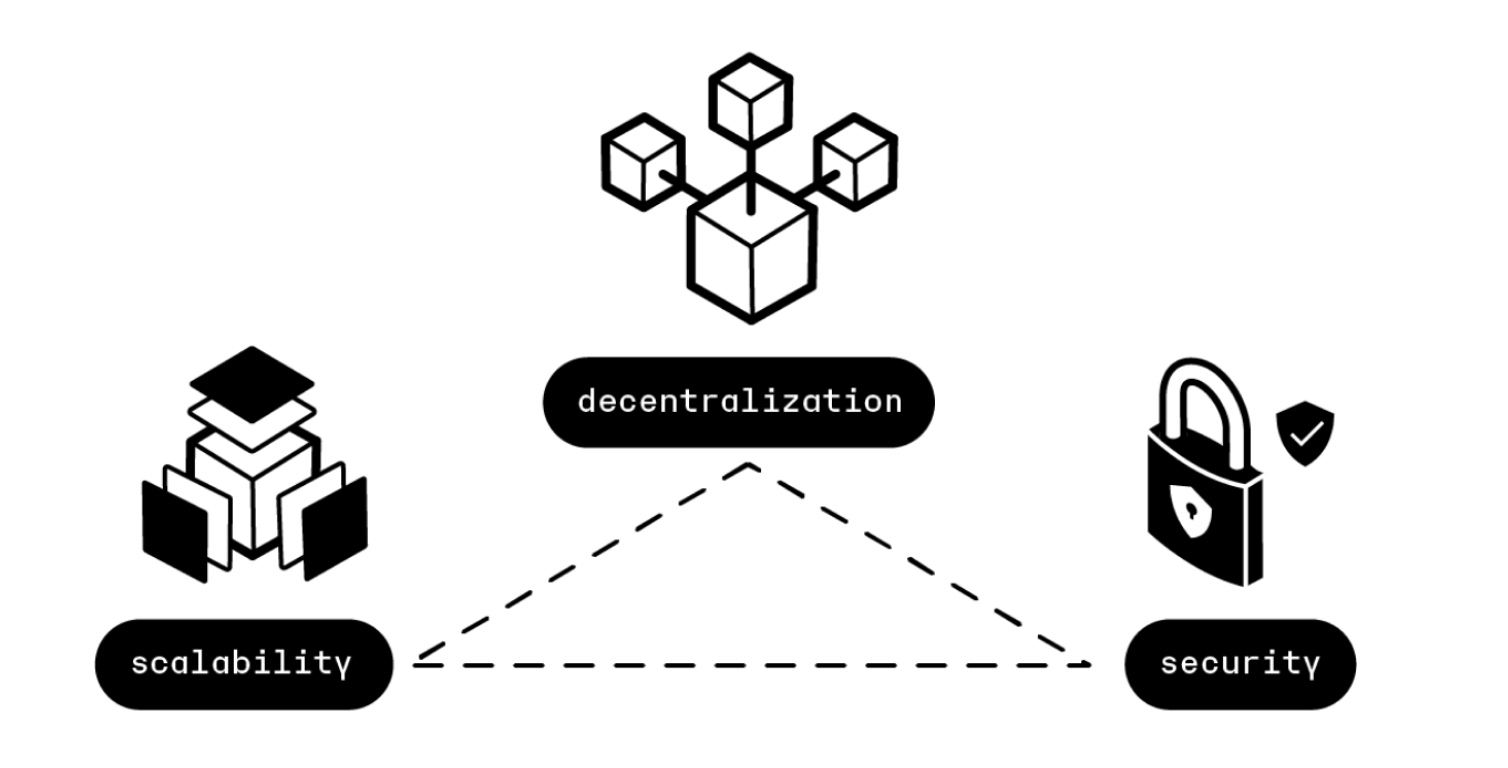
How does Solana work?
Solana is a Layer-1 blockchain (like Ethereum, Cardano or Avalanche) with a tweaked proof-of-stake mechanism which allows for smart-contract functionality, DeFi, dApps, NFTs, et cetera. The whole package, if you will. The project prides itself on the speed and throughput of its transaction system. Solana can process around 50,000 – 65,000 transactions per second (TPS), even though it claims it can theoretically process up to 700,000 TPS. For comparison, Visa, the largest payment processor in the world, can do around 65,000 TPS, Ethereum does, on average, 13 – 15 TPS, and Bitcoin only around 3-7 TPS.

The unmatched speed is achieved through its unique design. Solana runs on a hybrid protocol consisting of a Proof-of-stake (PoS) and Proof-of-history mechanism (PoH). The PoS consensus system is familiar to many (if not, we explain it in detail here), and is used by most cryptocurrencies. Ethereum will also soon transition to a PoS system (you can find more about the Merge here). However, PoH is a unique mechanism developed by the Solana team. To keep the explanation least technical, PoH is a method of proving that transaction blocks are in the correct order, based on the block formation time, and found by the correct validators. It might seem trivial but proving the creation time of the block is actually quite challenging. The PoH solves this problem and makes the process of validating transactions more streamlined with lower latency and higher throughput. The resulting time of creating a block is an astonishing 400ms. For comparison, Ethereum’s block time is roughly 15 seconds, and Bitcoin’s is 10 minutes. However, the method comes with the cost of higher centralization, which we will discuss later.
Altogether, Solana brings 8 new innovative technological developments (like Gulf Stream and Sealevel), which make its blockchain one of the most efficient in the market.
Solana benefits
1. Low fees – the crypto boom we have seen during the last two years made the Ethereum gas fees unaffordable for an everyday user. Solana used this situation to step in with an average fee of $0.00025 and saw massive adoption from all parts of the crypto market
2. High transaction speed
3. Economy of scale, rapid adoption – Solana has successfully onboarded millions of users, thousands of developers and hundreds of projects while maintaining low fees and high speed. It has branched into all parts of the crypto space and created a vibrant network
4. Wholeness – the project keeps its features without a need for Layer-2s, sharding or any other extensions

Tokenomics (SOL token)
SOL is the native cryptocurrency of the Solana ecosystem and is used for two essential purposes:
1. To pay for transaction fees on the network and for the use of smart contracts
2. For staking as a part of the PoS staking mechanism
Moreover, the projects built on Solana are adding new use cases for SOL. The demand/supply dynamics seem very favourable for investors as we have seen the token go from $3 to $250 in less than a year.
The developers have set up a clear inflation structure for SOL going forward. The network started with an 8% inflation rate, arising from the staking rewards. This rate should be lowered by 15% annually until we arrive at a 1.5% inflation rate in about a decade. Moreover, 50% of tokens used for fees are burnt which adds an additional deflationary feature. This might eventually bring the inflation rate even lower.
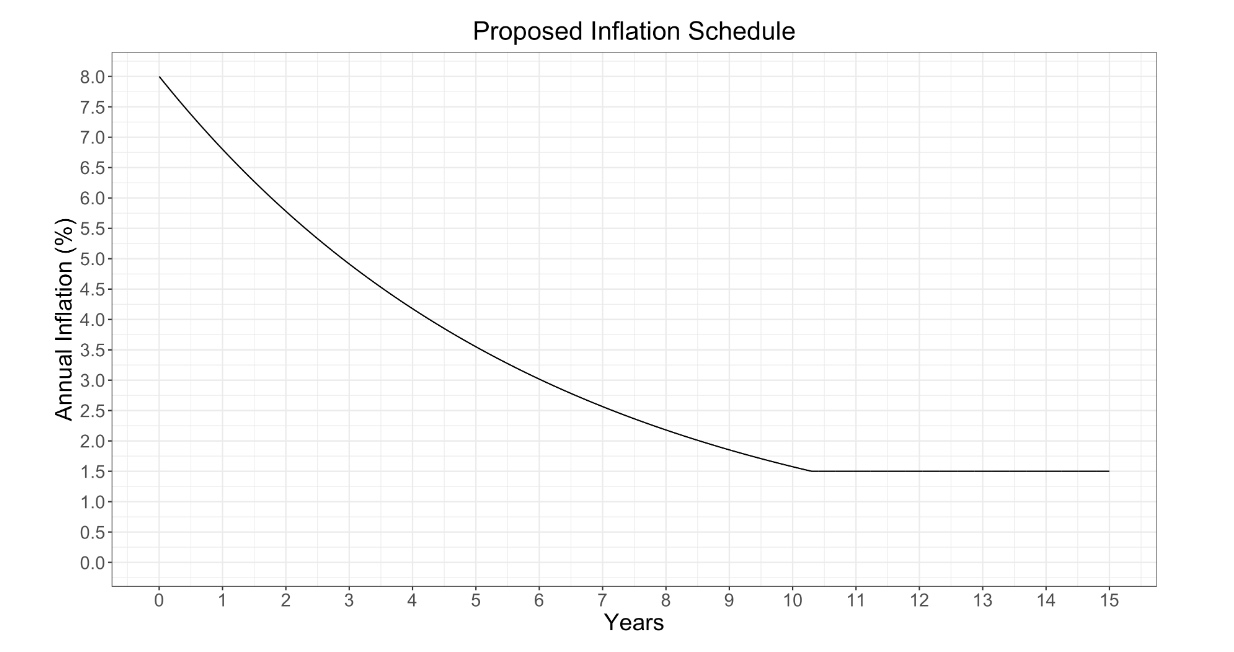
The network is secured through validators and delegators, as is common in PoS-based cryptocurrencies. Technically, anyone can become a validator; there is no minimum stake of SOL to become one. However, every day the validators must vote to confirm transaction blocks. To have voting power, they must pay a daily fee of 1.1SOL. At $100 a SOL, this comes to $36,500 a year, a significant amount. Furthermore, the hardware requirements are insanely high. Anatoly himself said that to be a validator, one must have a whole data centre. Nevertheless, the number of validators has been steadily rising, helping the centralization issue. Currently, the network is secured by 1973 validators.
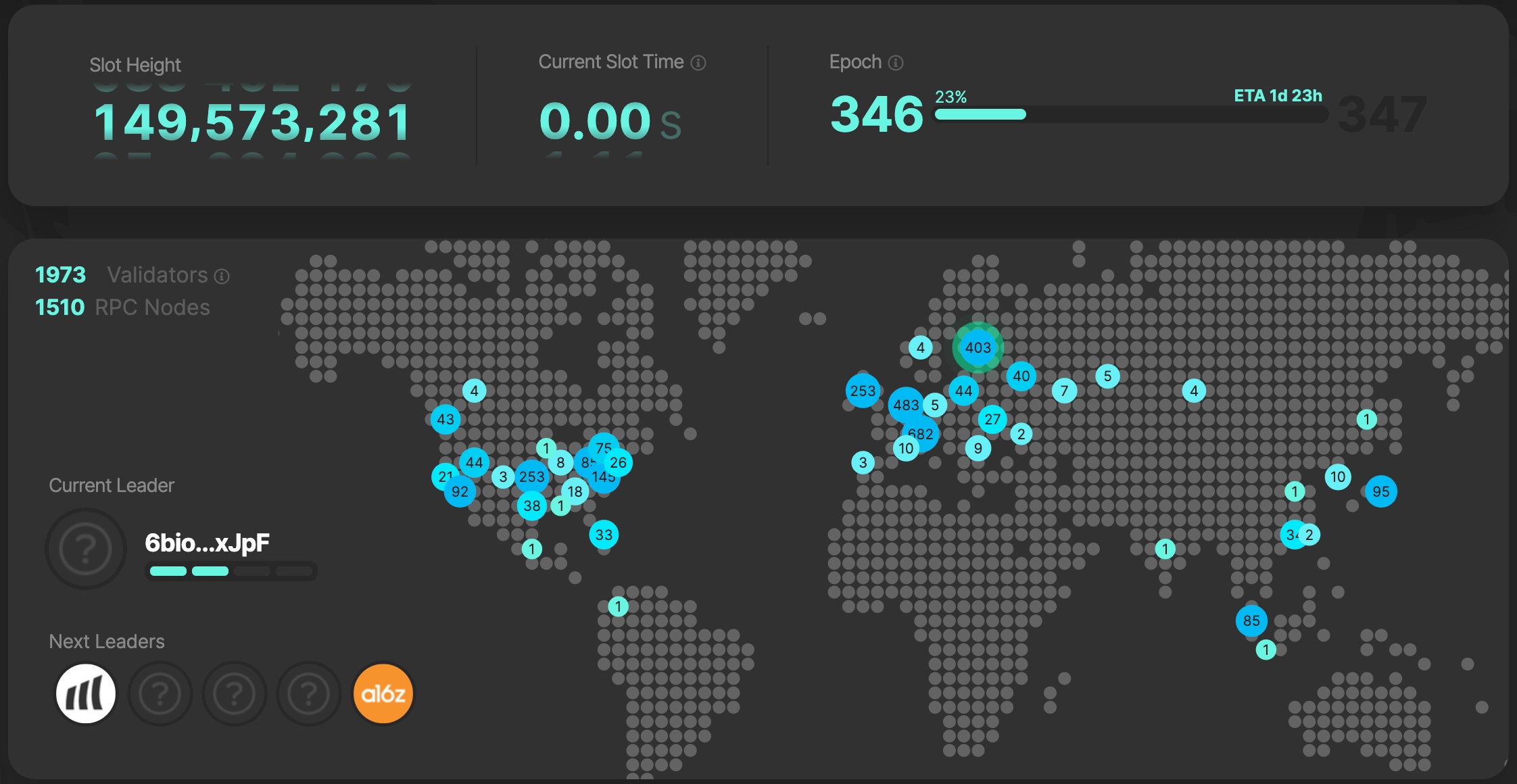
Concerns
1. Frequent outages – something that Anatoly called Solana’s curse in a recent interview. The project has already experienced at least 7 network outages (though some sources state a much higher number), which brought the blockchain to a halt. Five of these happened only this year alone. The longest outage the network experienced was in September last year, and it lasted 17 hours. Yakovenko claims that the disruptions are the unfortunate byproduct of its low fees/fast speed system. The network has become extremely popular due to its affordability, which leads to overuse and the consequent clogging of the network. The founder hopes to solve these issues as the project develops.
2. Centralization – the project is criticized for its high level of centralization, though the claim is frequently contested.
a. First of all, the project receives complaints about the high hardware requirements, which makes becoming a validator near impossible for most people. The project is trying to deal with the issue; they started a server rental program to make the hardware more accessible.
b. Next, people argue that the validators are concentrated, one of the reasons being the hardware requirement. Although the network is not top of the class at decentralization, it is certainly not the worst. When we look at the statistics compiled by Unstoppable Finance, we can see that compared to other large projects, Solana actually ranks really good. The Nakamoto coefficient calculates the least number of validators needed to disrupt the blockchain.

c. Finally, Solana is criticized for its initial SOL distribution, which gave almost 50% of the tokens to various VCs, developers and Solana Labs. Relative to other projects, the team gave only a modest share of tokens to the public.
We will let you make your own decision regarding Solana’s centralization problem.
Top 5 most promising projects built on Solana
1. Audius (AUDIO) – imagine Spotify or Soundcloud, but on a blockchain. Audius is a crypto-powered music streaming service. Prevalent music-streaming platforms are often criticized for their unfair compensation to the artists. Audius wants to fix that and give artists a chance to better monetize their content while staying closer to their fanbase. Audius currently has over 7 million users and 250,000 artists using its platform.

2. Serum (SRM) – is a quickly-growing decentralized exchange (DEX). Central to its platform is a decentralized order book run by smart contracts. Using this innovation, Serum aims to compete with DEXes which are currently running on an automated market maker (Uniswap, Sushiswap etc.)
3. Star Atlas (ATLAS/POLIS) – a true gem for gaming enthusiasts. Star Atlas hopes to become the most popular on-chain game. It is a space-based multiplayer strategy video game set in the metaverse in the futuristic year 2620. The game will utilize the most advanced gaming technology and wants to heavily integrate NFTs to create its own in-game economy powered by its ATLAS token. The game is yet to be fully released, but the hype is surely on. Here is the trailer to have something to look forward to

4. Stepn (GMT) – is a fascinating project which lets you earn crypto for walking and running; the pioneers of the move-to-earn concept. You start by buying sneakers which are in the form of an NFT. The type of sneakers you purchase determines how much crypto you earn. The prices range from $400 to $100,000. The sneakers can then be upgraded in 5 distinct features which further enhance your earning ability. The project skyrocketed during the bull markets but, along with the rest of the market, it has seen a significant slowdown in recent months
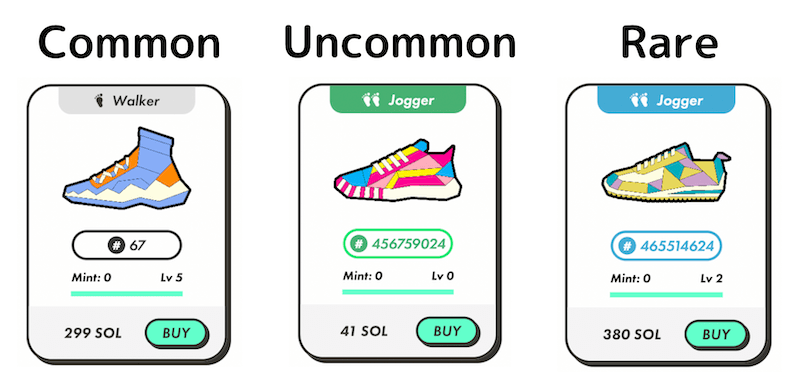
5. Magic Eden – is the most popular NFT marketplace on the Solana ecosystem. Due to the network’s remarkably low fees, many NFT enthusiasts have moved from Ethereum-based marketplaces, like Opensea, to Solana, which managed to climb all the way to third place in terms of the NFT sales volume. Magic Eden has been growing rapidly and even overtook Opensea’s volume in May.
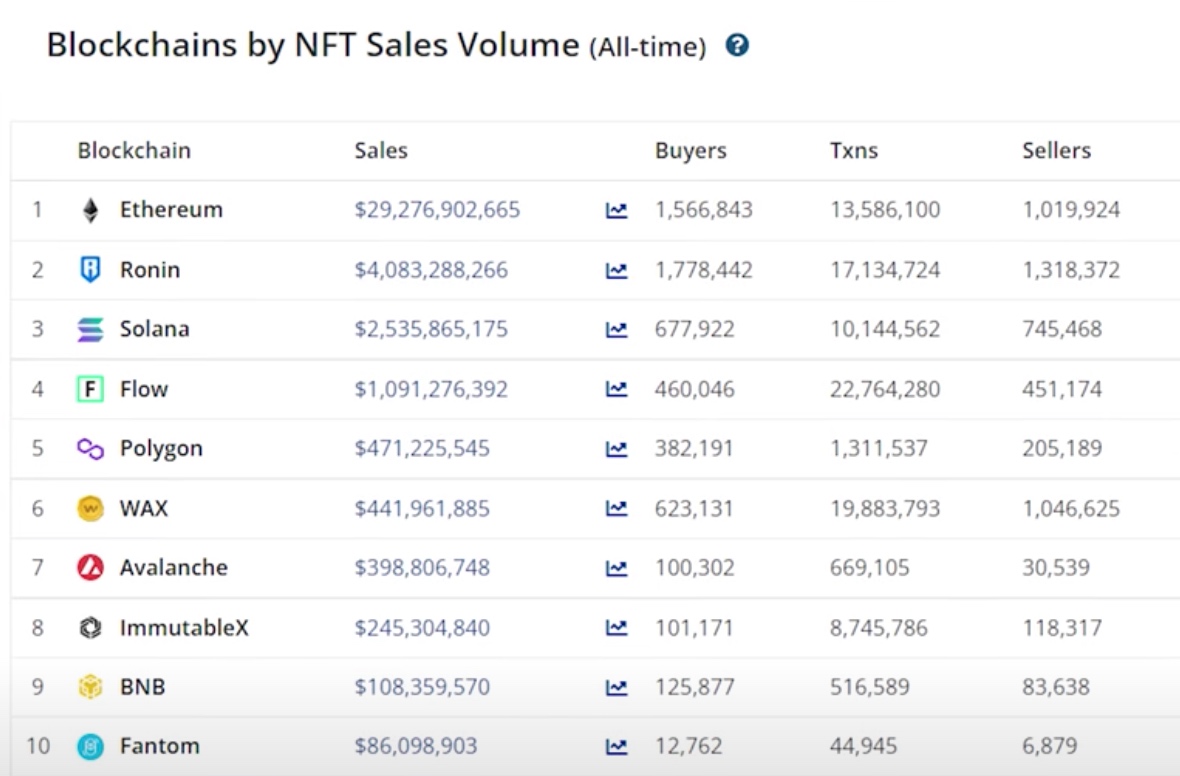
Interesting developments in the Solana ecosystem
1. Solana announced the development of its own mobile phone called Saga. The phone will have all the recent technological developments, but compared to the mainstream phone market, it will heavily leverage Solana blockchain, Web3 and decentralized apps, which will be built inside its own AppStore.

2. At the end of July, the project opened its first physical store inside the Manhattan mall, Solana Spaces. Seemingly resembling an Apple Store, the place will sell merchandise, NFTs and the Solana phone once it is released. Another purpose of the store is to educate people on how to use the Solana blockchain, its wallets (Phantom), Solana Pay, NFT marketplaces etc. This seems like an excellent way to onboard new customers. The store aims to act as a crypto hub with the goal of educating crypto beginners.

3. In August, the project went through a major hack, infiltrating over 8000 wallets and draining almost $8 million. The hack was not due to a flaw in the Solana blockchain but rather a bug in some of its wallet providers.
Bottom line
Solana represents a project full of potential, which has already undergone massive adoption and impressive innovation. From the constant stream of headlines, it is clear that the project continues to actively develop. Crypto entrepreneurs carry on selecting Solana as their home ecosystem, which further increases its intrinsic value. The only things that remain to be fixed are the constant network outages and the criticized level of centralization. Despite these issues, Solana is on the way to becoming a mainstream cryptocurrency like Ethereum and maybe even competing with Ethereum for the position of the leading Layer-1 blockchain.
Comments
You must be logged in to add a comment.